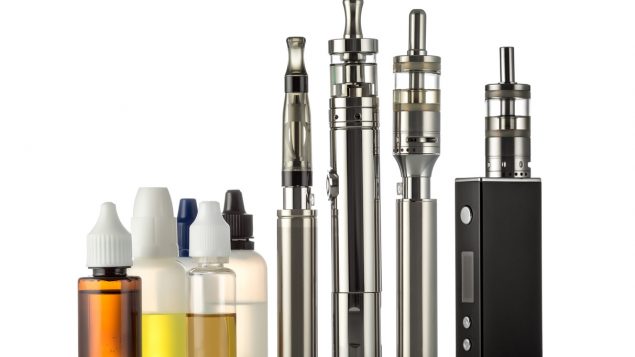The Canadian Cancer Society is applauding proposed new rules that would limit the amount of nicotine in vaping products, while a leading tobacco company says they will drive vapers to take up cigarette smoking.
Canadian government is hoping to reduce the rate of smoking in Canada to less than five per cent by 2035. Vaping is seen as a less risky alternative to smoking cigarettes. The Canadian Cancer Society says tobacco use the leading cause of preventable disease and death in Canada. It is said to lead to 45,000 deaths yearly, including about 30 per cent of all cancer fatalities. Figures from 2019 suggest that 4.7 million Canadians smoke. That is about 15 per cent of the population over the age of 12.

Some vaping products sold in Canada are said to have almost triple the nicotine concentrations as do those sold in the EU. (gawriloff/iStock)
Youth vaping said to have tripled in four years
If adopted, the new regulations would set a maximum concentration of nicotine to 20 mg/ml for e-cigarettes. In Canada, some brands currently have concentrations of 57 or 59 mg/ ml which is said to be almost triple the levels in the EU. The provinces of British Columbia and Nova Scotia already limited the concentration to 20 mg/m as of September 2020. The province of Quebec plans to do the same.
The Canadian Cancer Society says the rates of youth vaping have climbed dramatically, tripling in four years, making the new regulation urgent.
“The high rate of youth vaping is of fundamental concern and provides the necessary rationale for the new regulations,” says Rob Cunningham, Senior Policy Analyst, Canadian Cancer Society. “High nicotine levels have contributed to a new generation of young people becoming addicted to nicotine through e-cigarettes.”
Regulations could backfire, says tobacco company
Imperial Tobacco says reducing the amount of nicotine in e-cigarettes will diminish the use of vaping products as a less harmful alternative to smoking. “Canadian cigarettes have a higher nicotine level than European cigarettes,” reads a corporate news release. “Canadian smokers, therefore, have different expectations and taste preferences. Capping nicotine levels at 20 mg/ml will mean that smokers will not be able to find a product that satisfies them, and many former smokers who now vape will go back to smoking.”

One tobacco company says that if the nicotine levels are too low in vaping products people will switch to smoking cigarettes. (martinedoucet/iStock)
Restricting access is called a better alternative
Imperial Tobacco says it strongly agrees with government youth prevention aims but it says the only way to curb youth consumption of any product is to ensure they do not gain access to it. There are rules restricting youth access to tobacco and vaping products.
“To protect youth, the discussion should not be about nicotine levels but rather how kids are gaining access to adult restricted products,” said Eric Gagnon, Vice President of Corporate and Regulatory Affairs at Imperial Tobacco Canada. “Anyone who sells a vapour product to minors should be harshly penalized, it is truly as simple as that.”
Both groups are expected to make representations at public consultations on the proposed regulations.







For reasons beyond our control, and for an undetermined period of time, our comment section is now closed. However, our social networks remain open to your contributions.